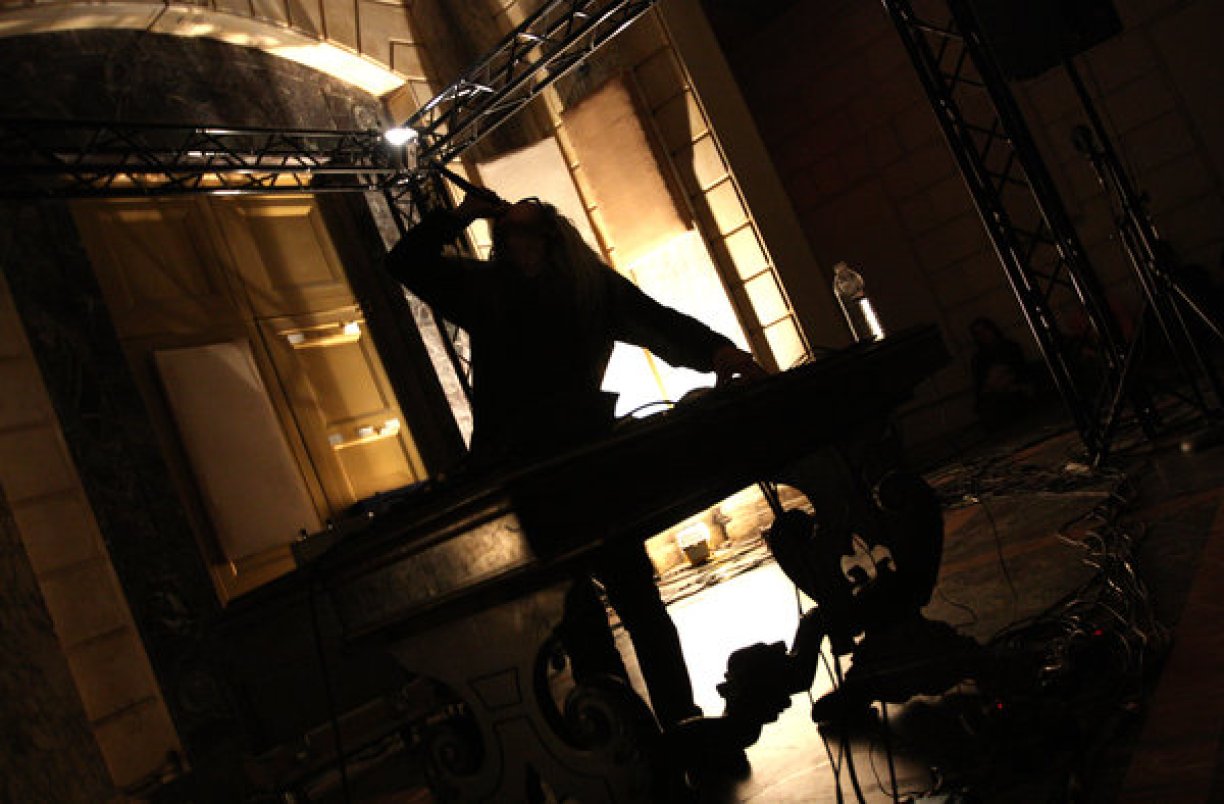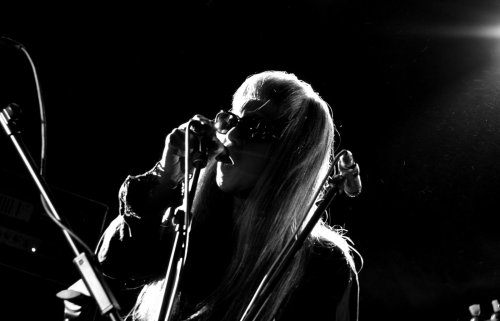Volume Set To Fortissimo
Ben Ratliff in the New York Times on Keiji Haino
Keiji Haino lives among the class of improvisers who roam so far from what we usually call form — meaning, basically, rules — that they make you question whether what they’re doing is music. When you arrive at that question, generally, the joke’s on you. If you feel nothing for the music, you can walk away. If you feel something for it, you may start to notice that it possesses its own unity, its own rules. Anyway, it’s not Mr. Haino’s problem. “I am not an anarchist,” he has said. “I am anarchy.”
In America, where he performs infrequently, he’s mostly been known for playing electric guitar loudly and singing gesturally, charismatically, in Japanese or with wordless sounds: sometimes solo, and often as part of a kind of free-rock, pan-tonal power trio called Fushitsusha. (Now 60, Mr. Haino was imprinted by American psychedelic music — Blue Cheer especially — while growing up in Japan; hence his long hair and bangs, all-black clothes and sunglasses, his Gibson SG, his amps set at liquefaction level.) Clearly he’s interested in the brute force of sound, and the prime engine of that interest has seemed to be the guitar.
This past week, thanks to Issue Project Room and the Whitney Museum of American Art, Mr. Haino played three times in New York. The first performance, on Wednesday, at Issue Project’s small and high-ceilinged Downtown Brooklyn space, didn’t involve guitar at all, yet it was the loudest performance of his I’ve ever seen, and one of the best. Let me phrase that in another way: One of the loudest performances by anyone I’ve seen in a long time, and one of the best.
Mr. Haino, small and thin, moves like a teenager, fast and abruptly, with clarity. He made his way to a pair of microphones and began singing in a falsetto through churchy, semi-medieval modes, but the modes became compromised and discontinuous, and so did the basic blocks of sound he made: sometimes his voice squeaked, pushed as high as it could go, or gave out and turned into exhaling.
Next, he started reaching the bottom of his voice — not quite throat-singing, but close. He put a small microphone inside his mouth and sat in a chair, continuing his low grunting breaths: giant, immersive, underwater nimbuses, with vibrato at the end. Then — quickly! — he jumped up to another standing microphone, where he began a weird sonic compound of murder and prayer: penetrating shrieks, steadying purrs. Extremely loud. Understand? I’ll say it again: extremely loud.
Continuing his long, low tones, he turned on an oscillator box and moved over to three small machines on a desk: they were airSynths, made by Alesis, sort of digital theremins with more options, and they produced dirty, thick, distorted, guitarlike tones. For a while he waved his hands over and around them, almost dancing, changing the width and layering of the sound; then he returned to the microphone, shrieking more heavily and gutturally, curling down to the floor and shaking. And then, as if he really did care about rules, he went back to the churchlike falsetto, tying up 75 minutes or so as beautifully as anyone could. It had been aggressive, centered, thorough and mysterious. The joke was on you.
A version of this article appeared in print on April 22, 2013, on page C1 of the New York edition with the headline: Volume Set To Fortissimo .
http://www.nytimes.com/2013/04/22/arts/music/keiji-haino-at-issue-proje…


